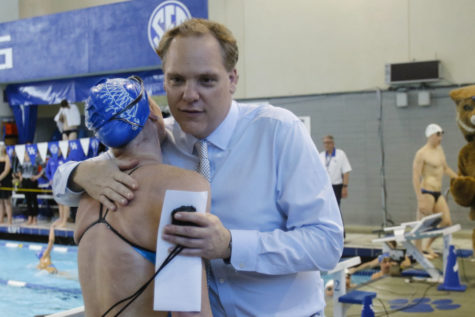Athletes expose themselves to injuries; let’s give them the respect they deserve
September 17, 2007
Column by Bryan Kennedy
Sometimes college football players are viewed as guys who get a full scholarship for doing nothing, but I think people forget it takes a different kind of person to play football. There is a reason why many high schools don’t have football tryouts: Not everyone can play football. It’s just one of those sports that not everyone can play.
Take an example from the pros: On Sept. 9, Kevin Everett of the Buffalo Bills attempted a tackle on the Denver Broncos’ Domenik Hixon on a kickoff. After the contact, Everett fell to the ground in a painfully awkward position.
Everett suffered a spinal injury that will mostly likely end his NFL career and change the rest of his life.
Kevin Everett has possibly given up walking for football. When players take a step onto a football field, they know the next play could be their last. Still, players continue to step onto the field and play the sport they love.Numerous football players have died from taking a direct hit during a game or suffering from a heat stroke during practice. In 2002, 15 players died from football injuries, a decline from 23 in 2001, according to ESPN. Players truly put their life on the line every time they touch the football field.
While accidents like Everett’s are rare, every hit has a chance of ending a player’s career and possibly his life.
The National Center for Catastrophic Sports Injury research reported that, in the last 30 years, there have been 269 cervical spinal cord injuries among football players on the high school and college levels. Of those 269, none recovered neurologically.
Approximately 1.5 million student athletes play high school football and 75,000 play college football, according to the NCCSI. While 269 may seem low compared to these numbers, the statistic should still be pondered.
Although we know the number of spinal cord injuries, there is no telling how many players have received other injuries. Leg, arm, shoulder and back injuries are commonplace in football. Those injuries, although not as severe as spinal cord injuries, can also be life-altering.
Earl Campbell, a Hall of Fame running back, can barely walk now. Jim Vertuno, an Associated Press sportswriter, interviewed Campbell, and he spoke of how doctors directly attributed his hits on the field to his struggles now off the field.
The risk of life-alerting injuries stretches well beyond football — all athletes put their lives and futures on the line.
Professional baseball player John Olerud was willing to risk his life for his sport. Olerud suffered a brain aneurysm in college, according to a Baseball Digest article. After surgery, Olerud had to wear a protective helmet while playing to protect him from taking a deadly hit to the head. But even a mortal threat could not stop Olerud’s love of the sport.
Boxers enter the ring knowing that one hit could end everything. Muhammad Ali, no doubt one of the best boxers ever, suffers from Parkinson’s disease. Doctors say Ali’s symptoms were brought on by the repeated blows to the head he endured in the latter part of his boxing career, according to Thomas Hauser’s biography of Ali.
So before we are quick to criticize athletes, we should take a step back and realize that it takes a special kind of person to play football and all other sports. Athletes are truly putting their life on the line when they enter their respective field of play. As spectators, we should step back and give them due respect.
Bryan Kennedy is a journalism sophomore. E-mail [email protected].



















































































































































